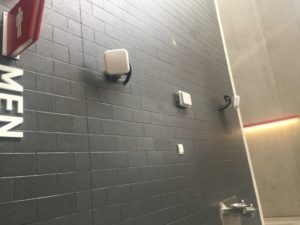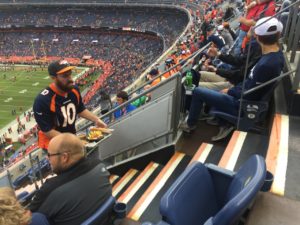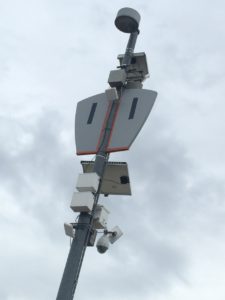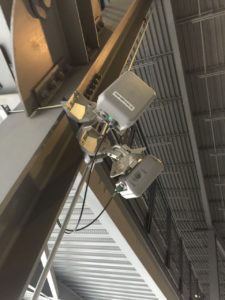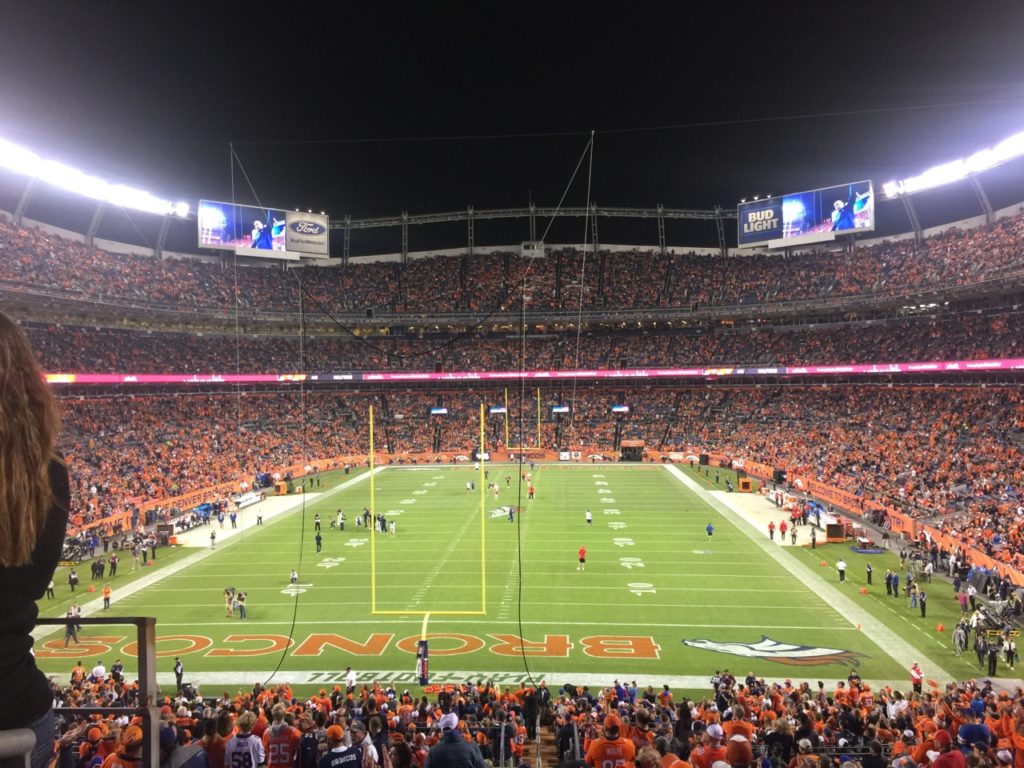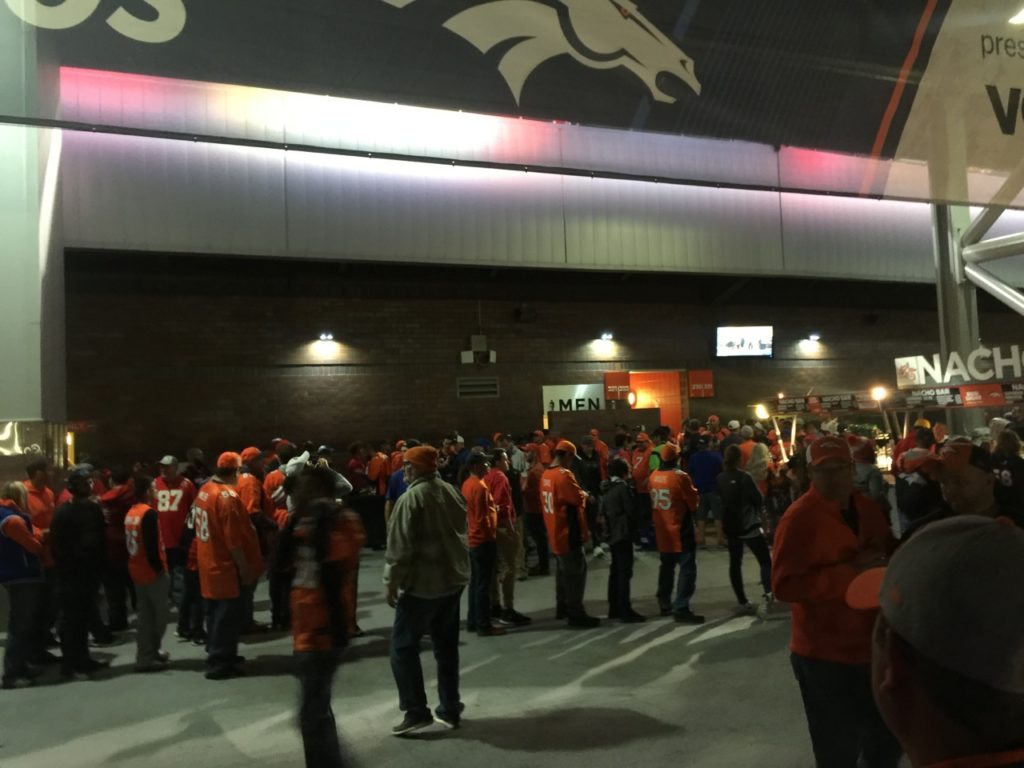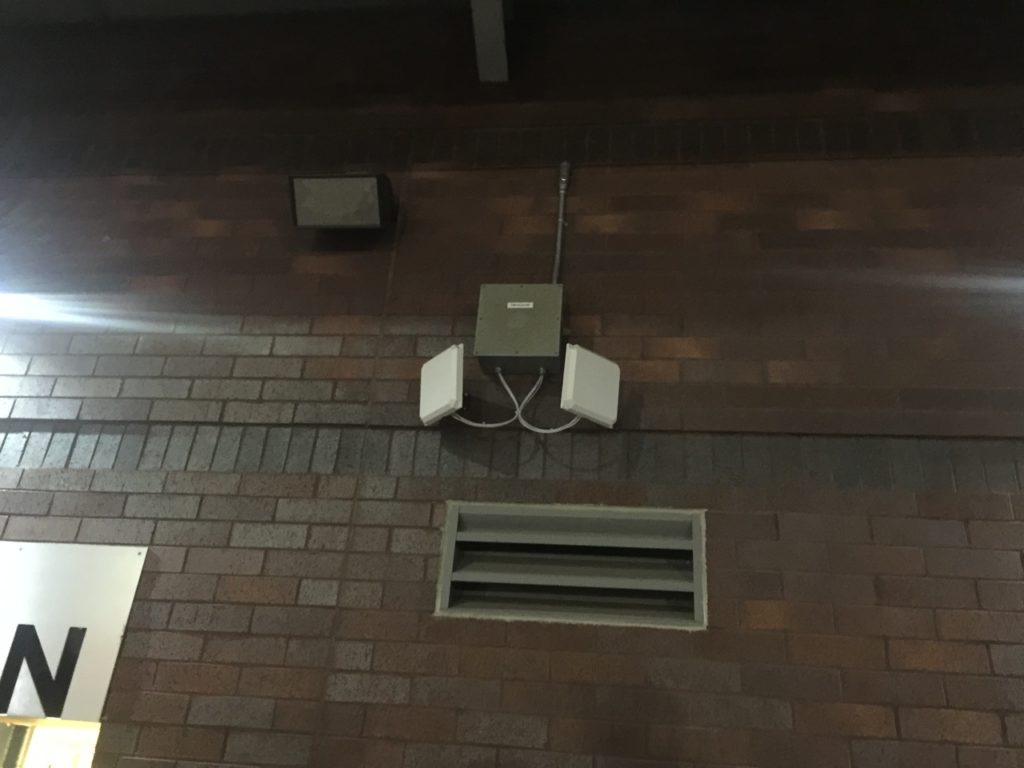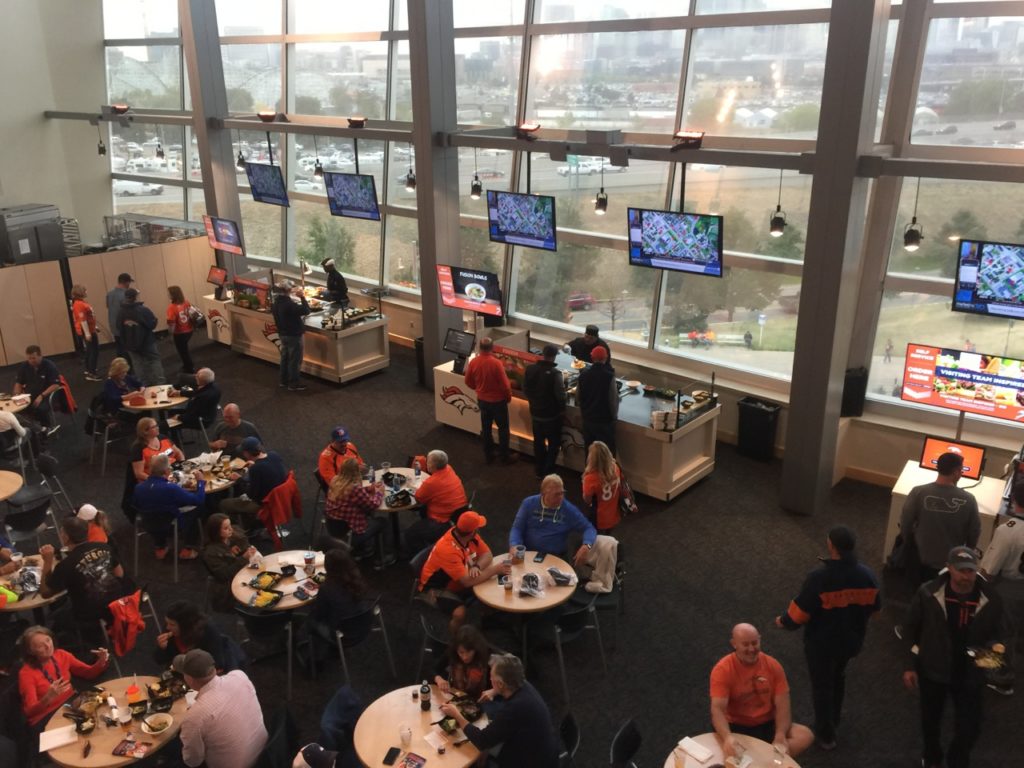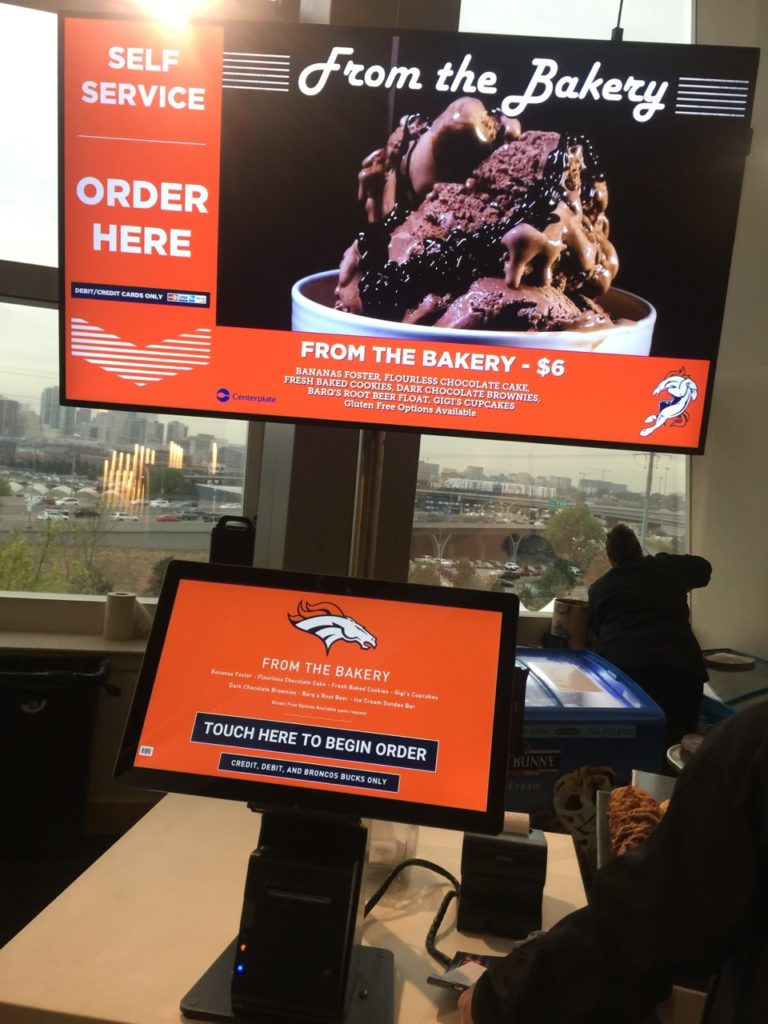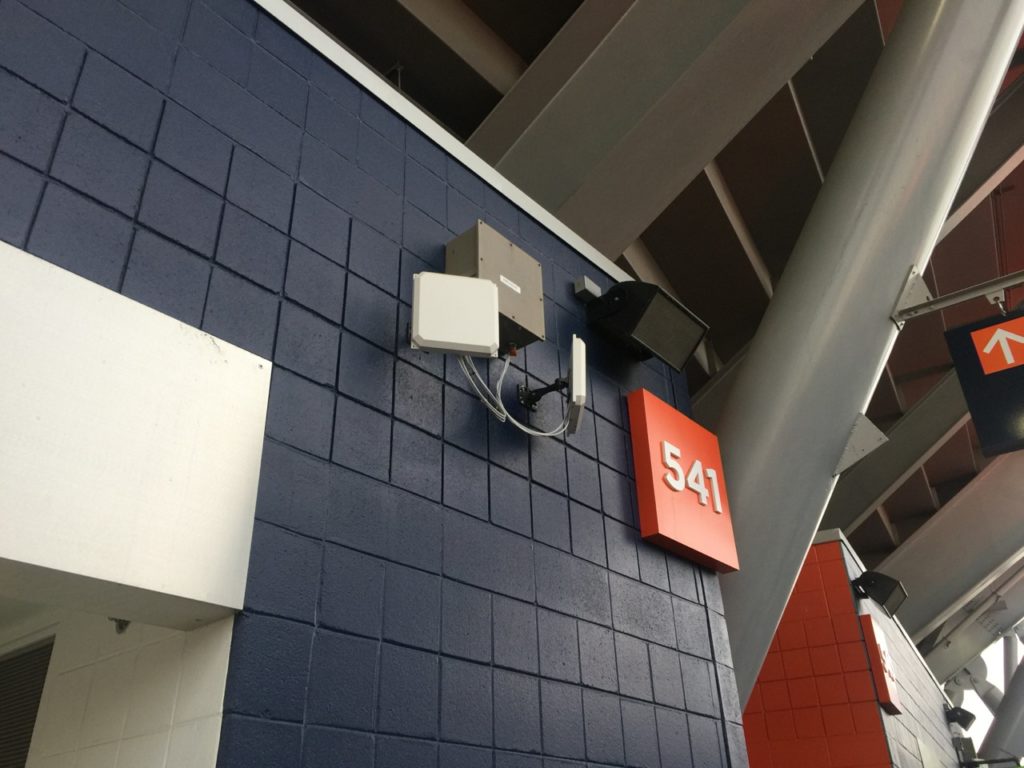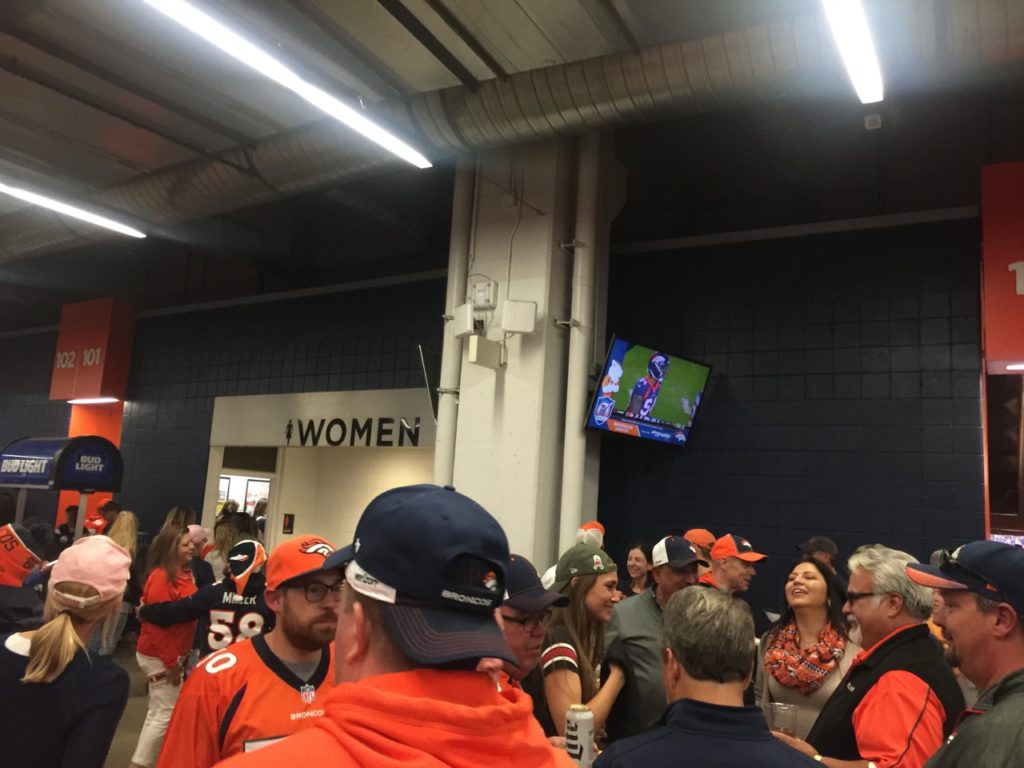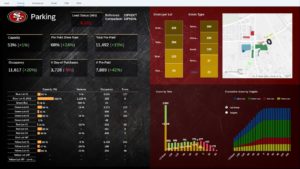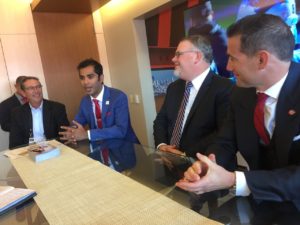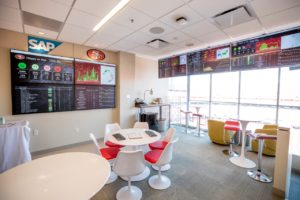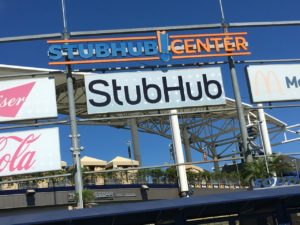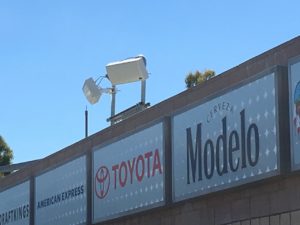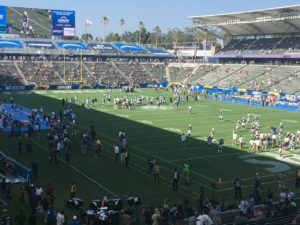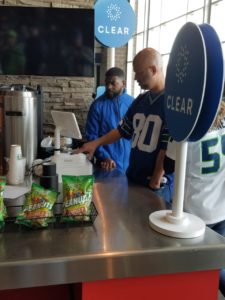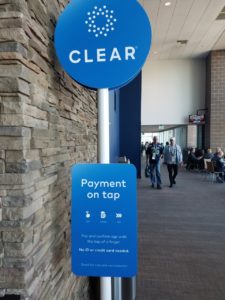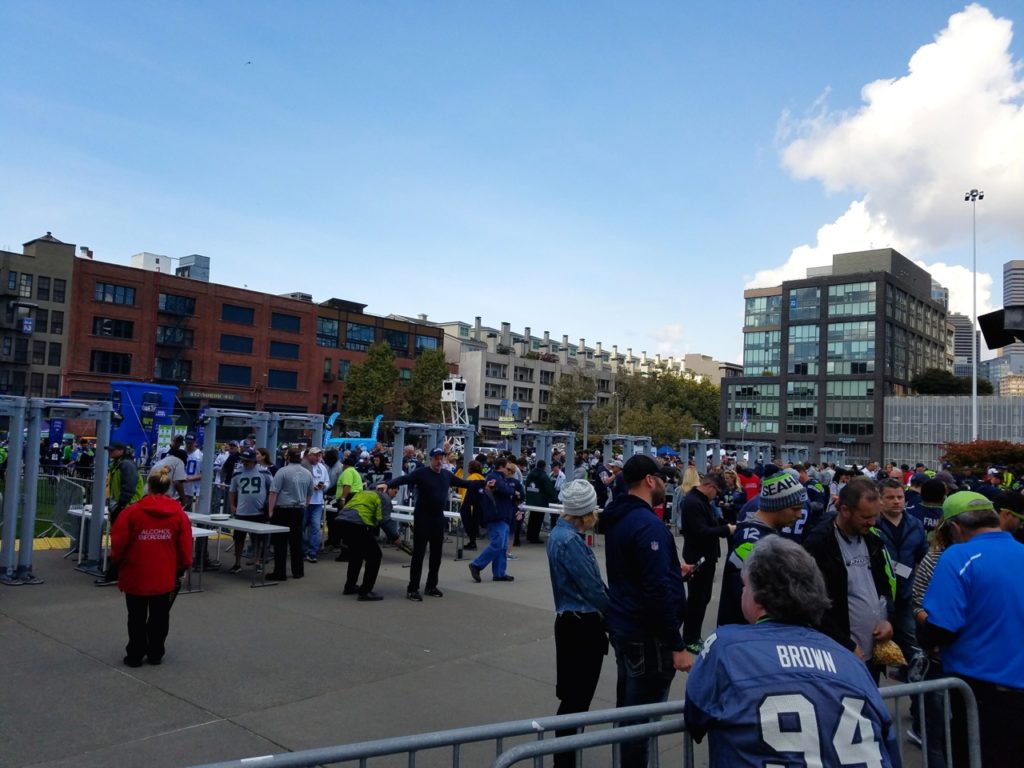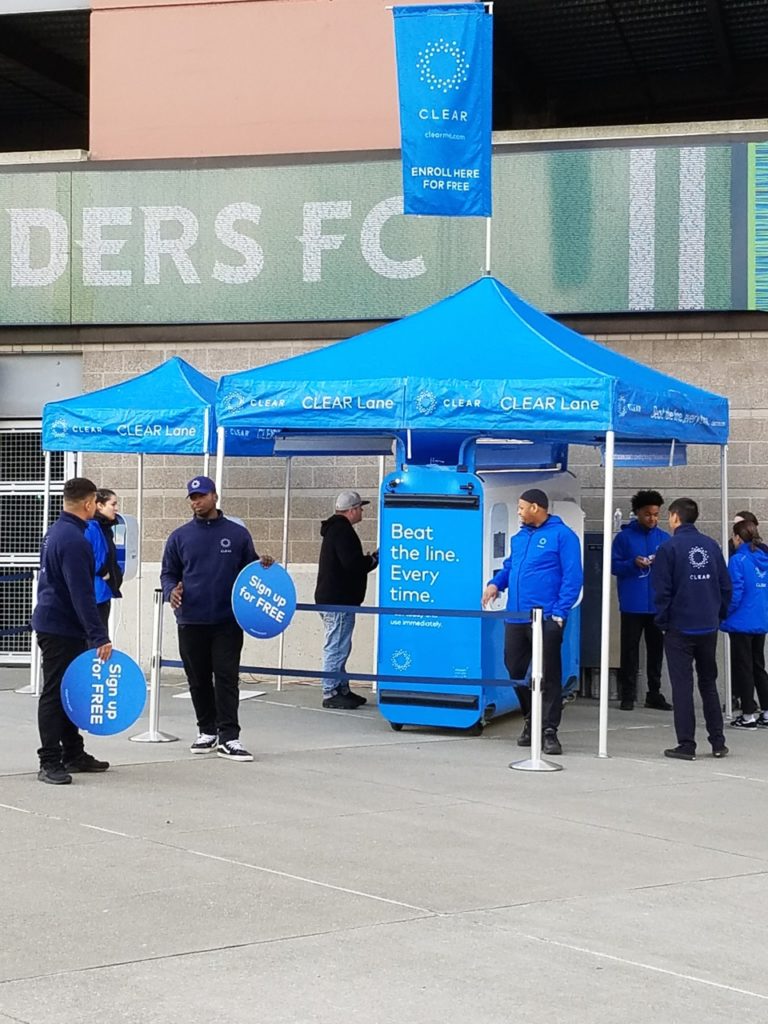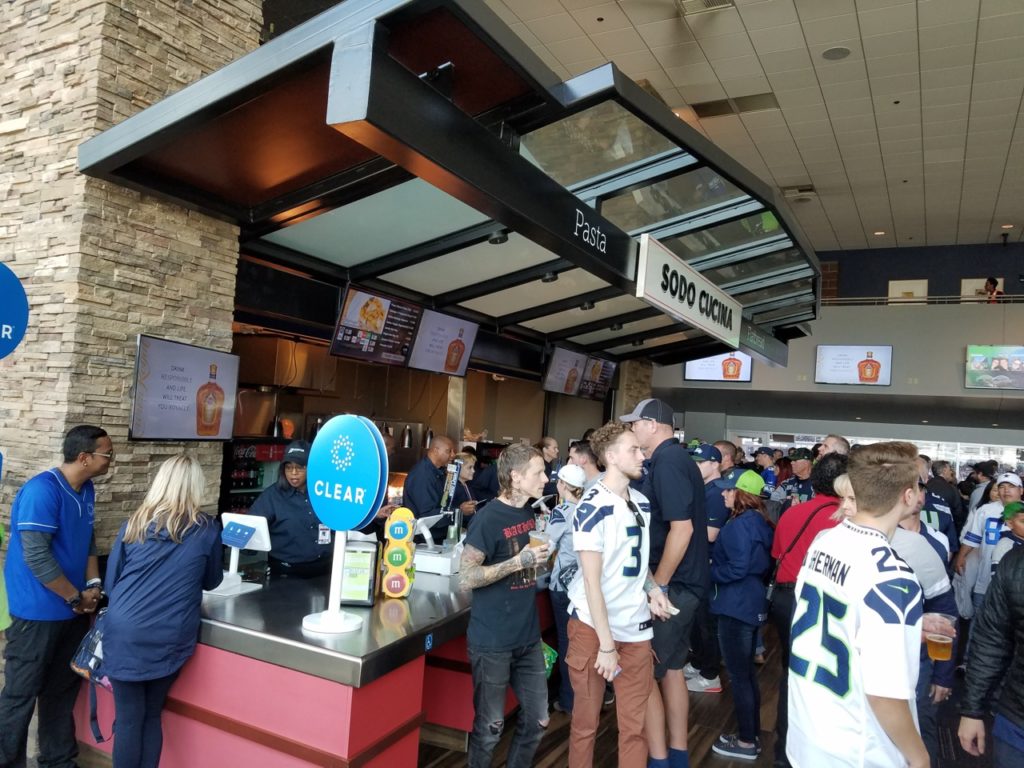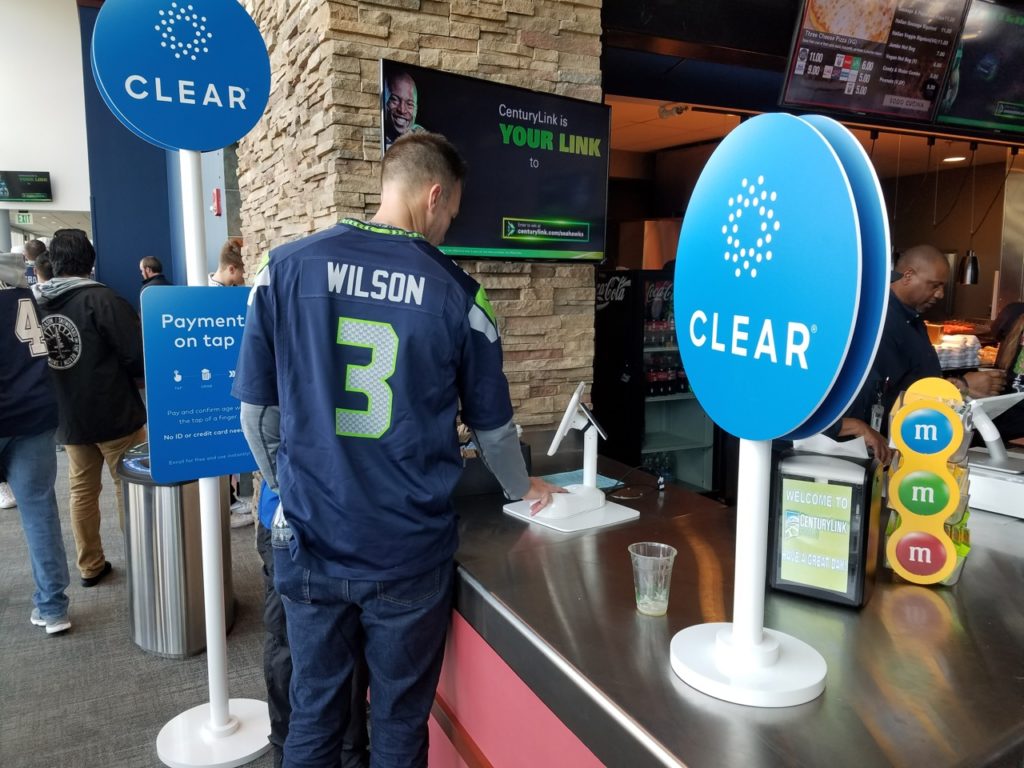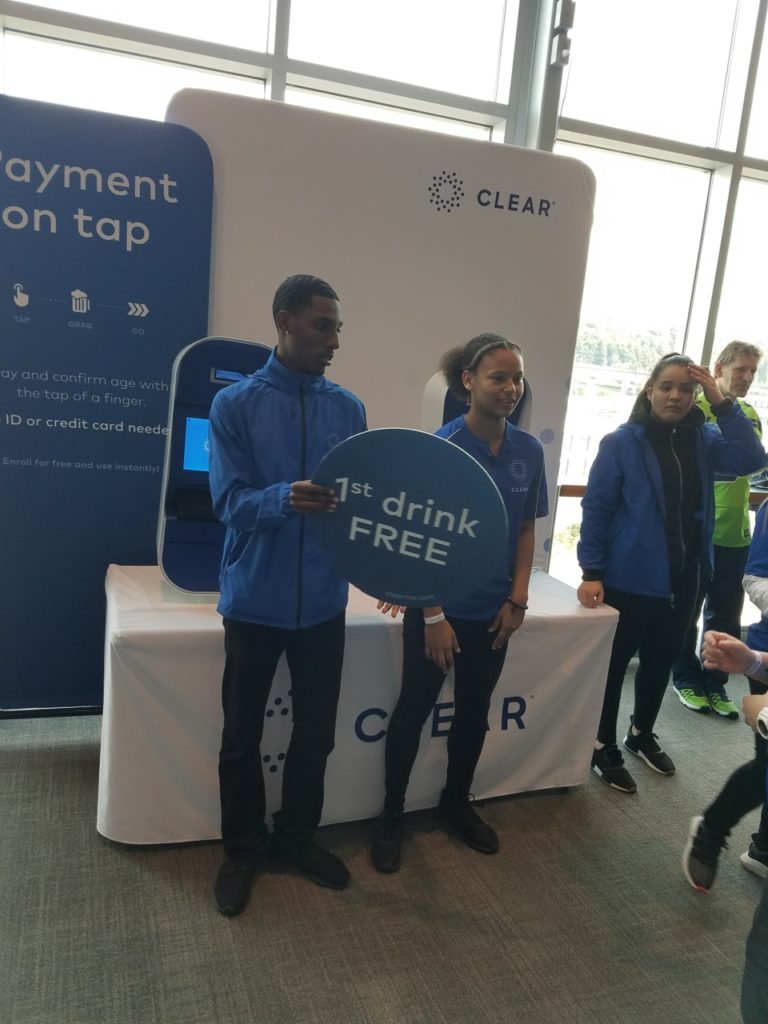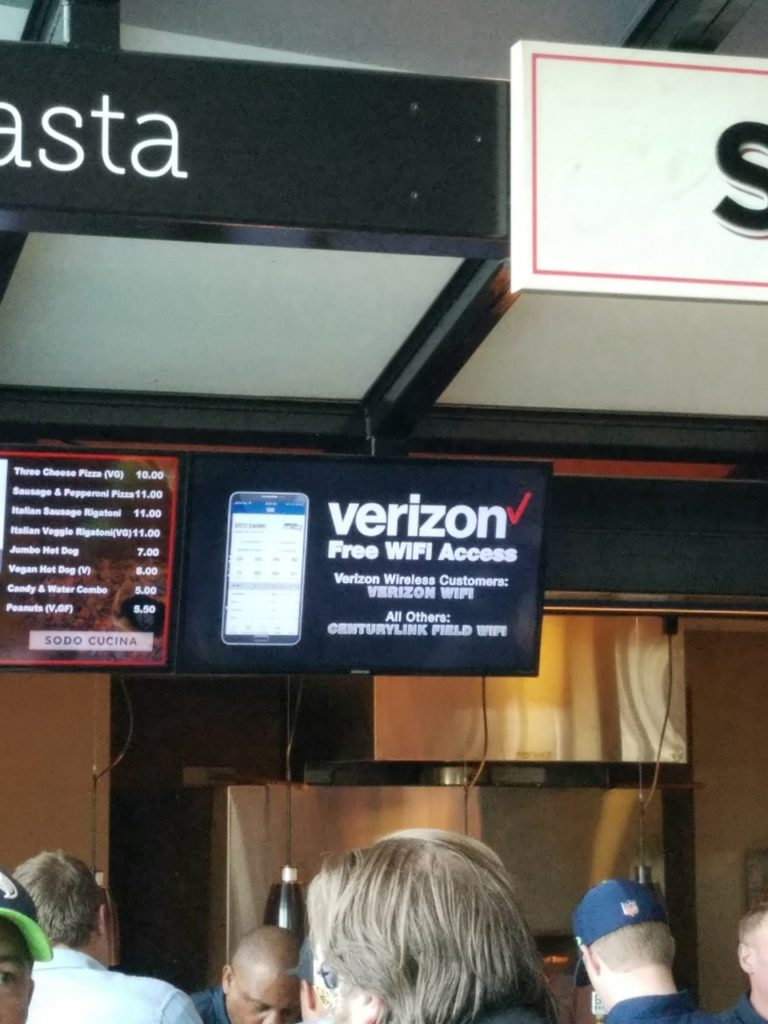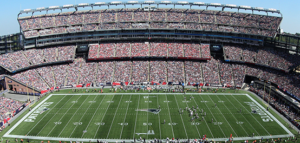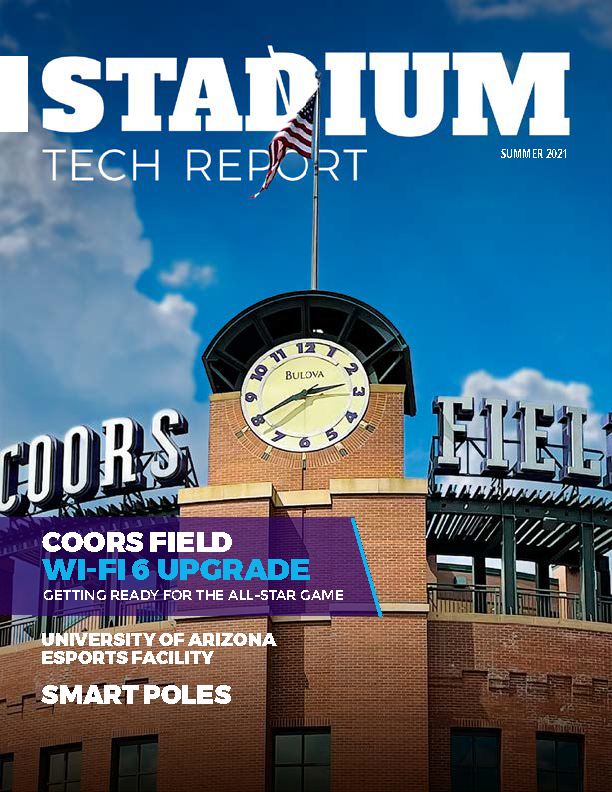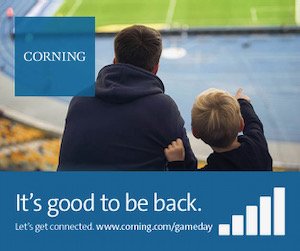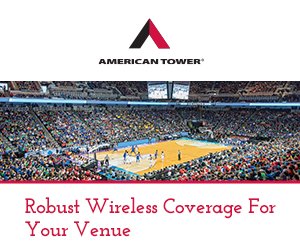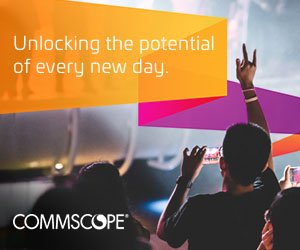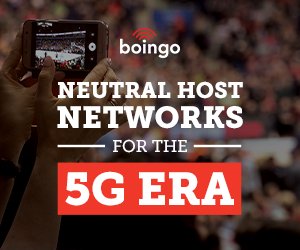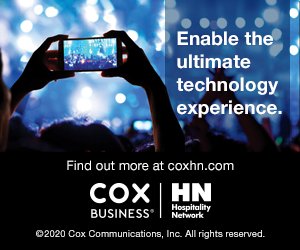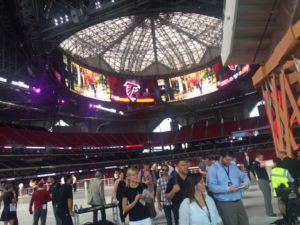
The entry concourse at Atlanta’s new Mercedes-Benz Stadium. Credit all photos: Paul Kapustka, MSR (click on any photo for a larger image)
According to the court filing, IBM basically alleges that Corning failed to deliver a working DAS for the Falcons’ new home, which opened last summer. IBM also said that it, the Falcons and the NFL needed to spend extra millions to make the system work. The topic is of special interest to the NFL and the Falcons, since Mercedes-Benz Stadium will host Super Bowl LIII in February.
In the court documents IBM does not list an amount it is seeking as compensation, but instead said it will seek “damages in an amount to be proven at trial” for several categories of claims it identified. In its filing, IBM claimed that it had purchased approximately $20 million in equipment and materials from Corning to build the DAS.
Corning representatives did not want to conduct an interview Friday about the subject, but a company spokesperson provided the following official reply via email:“Corning is a company of the highest integrity. We are confident that the company has conducted itself in an honorable manner and has been fully compliant in meeting its contractual obligations.”
Among the claims in IBM’s filing is that Corning’s design for the DAS was flawed, especially in its ability to predict the correct placement and orientation of DAS antennas. IBM also claimed that Corning did not have enough engineers on hand during deployment times to ensure the DAS was working correctly. According to IBM’s filing, during last fall’s opening season there were “many areas of Mercedes-Benz Stadium that had little or no usable cellular services” until IBM fixed the system later in the year.
IBM also declined to make anyone available for an interview with MSR. A company spokesperson provided the following official reply via email:
“IBM successfully works with partners on major projects around the world. On this project, however, Corning delivered a flawed cellular system to the Falcons and IBM, and then failed to fix it. IBM stepped in and spent a year to deliver state-of-the-art cellular performance for fans, and Corning is now accountable for failing to live up to its obligations.”
MSR has heard that Verizon Wireless is currently working on enhancing the DAS network at the stadium for the upcoming Super Bowl, but Verizon executives would not comment on any specifics. One source has told MSR that some of the improvements include new under-seat DAS antenna placements, which have required core drilling through the existing concrete floors for installation.
We’ll be following and developing this story as we can, so stay tuned for more info (and please contact us if you know any of the particulars).
